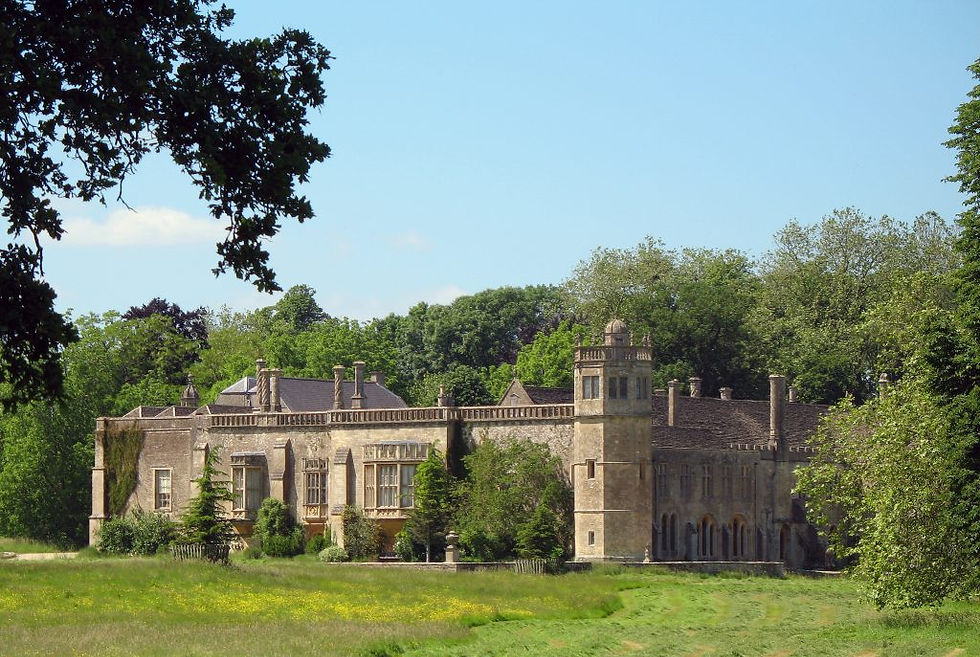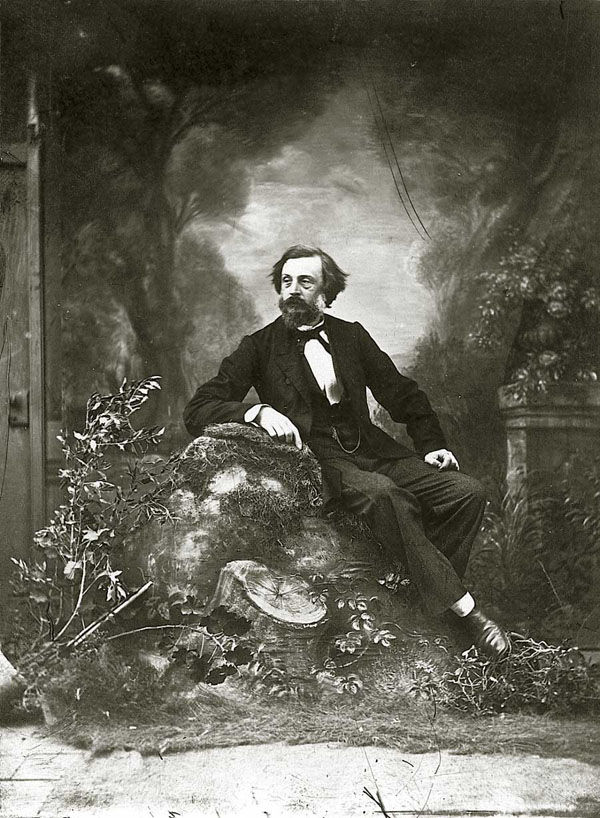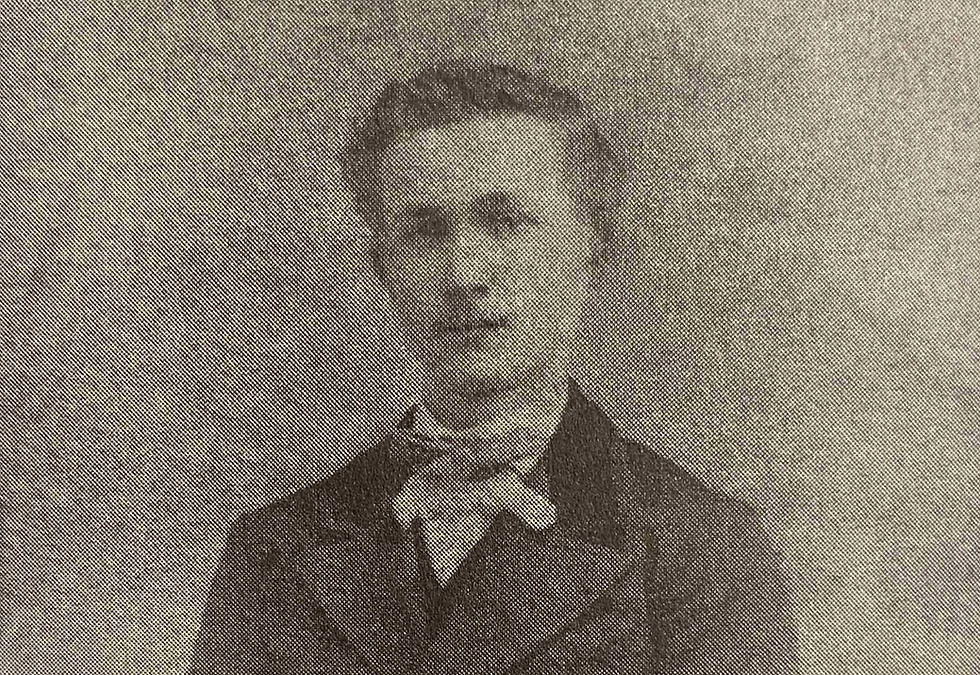Charles Nègre, Grasse's photographer-artist
- Tom Richardson
- Aug 14
- 6 min read
Updated: Sep 13
On a wall next to our new Médiathèque is a large image, sometimes mistaken for that of Che Guevara. It’s actually of Charles Nègre*, after whom the library is named, a Grassois born and bred whose traces are all around the town. You can see some of his work in the Musée d'Art et d'Histoire de Provence (MAHP) in rue Mirabeau, and Nice’s Musée de la Photographie in pl Gautier is named after him.

Nègre was a competent artist, but a photographer of near-genius who combined technical prowess with skills learnt from painting to produce images which stand out even today.

He was born in Grasse in 1820 to a father of Italian origin (Charles' grandfather, Carlo Negri, came to Grasse from near Milan) and a mother from an old local family, the Isnards.
The family’s confectionery business made them prosperous enough to send Charles to a teacher of art in Aix-en-Provence at the age of 17 and then to the Beaux-Arts in Paris in 1839 to work under, among others, Ingres.
He was introduced to the new technology of photography in 1844 by one of his teachers as a potential aid for creating paintings, but Nègre decided that it was a medium for the future in its own right. He continued his painting career while experimenting with and developing new techniques in photography.
Nègre’s paintings in Grasse
Several of Nègre’s paintings are in the MAHP. Some, like that of his sister Anne (looking rather grim!), were obviously painted for personal reasons, and one suspects that others, like his portrait of General Gazan (see my blog here) and certainly his copy of a Winterhalter portrait of King Louis-Philippe (in the Villa Fragonard) were painted simply to help make him a living.

Two are interesting for other reasons. He completed his ‘Death of St Paul the Anchorite’ in 1847 and showed it in the Paris Salons of 1848 and 1850, from which it was bought for 600 francs and donated to the cathedral here.

Now, this particular St Paul, if he ever existed, never left Egypt, but the cliffs in Nègre’s painting can be identified as those of Roquebrune, easily seen today from the A8 highway. His sister Anne lived nearby with her husband in Le Muy!
In an alcove of what was the mistress’ bedroom in the MAHP (the old hotel particulier of Cabris-Claviers) is a slightly forbidding image named ‘Le Suffrage Universel’.

It is actually a reflection of the turmoil in Europe of the 1848 ‘Year of Revolutions’ which in France turned the kingdom of Louis-Philippe into the First Republic. Nègre, who it seems had become a convinced republican despite originating in the royalist south, painted it to enter a competition called ‘La Figure Symbolique de la République’. The male figure symbolizes the strength of the people of France. A smaller version of the painting shows an urn to indicate the importance of democracy.
It did not win, indeed even the pre-selection jury rejected it.
Expertise in photography
In 1849, Nègre started working in a new photographic studio created by another painter, Gustave le Gray, and used by him and other artists. New technology developed by the Englishman, William Fox Talbot, known as ‘calotype’, appears to have been the driving force.

While Louis Daguerre’s daguerreotype (where single images are developed on copper sealed in glass) was the first photograph, the calotype allowed negatives to be transferred to paper and more than one copy to be produced. The Fox Talbot museum in the historic village of Lacock in Wiltshire (a location beloved by makers of TV history series!) commemorates the process.
Those working at Gray’s studio, including Nègre, regarded themselves as photographer-artists. Nègre regularly used his painting skills to touch up and modify his negatives using graphite pencil or powder – long before Photoshop! He later adopted another new technology from England, Frederick Scott Archer’s collodion process, which facilitated more detailed and grey-scale images. He clearly acquired a knowledge of the physics and chemistry needed and developed his own patented cross between photography and engraving, known as heliographic engraving.
Two of his most famous images are 'Les Ramoneurs en Marche' ('Chimney Sweeps Walking'), one of the first street photographs, which created something of a sensation because of its sense of movement, and 'Le Stryge' ('The Vampire'), a statue on Notre-Dame Cathedral in Paris, which is stunning even today.

Nègre in the south
In 1852, having taken a teaching job in Paris to supplement his income from the family business in Grasse, he made a tour of Provence to produce an album of photographs entitled ‘Le Midi de la France’. It includes a rather indistinct image of the Place aux Aires and an arresting one of St Cézaire-sur-Siagne.

It was the album's failure as a publication (only one copy survives) which drove him to develop his heliographic engraving method of reliable, if expensive, reproduction.
Nègre clearly never forgot his origins and regularly visited his family in Grasse.

From 1860 onwards, he spent more time in the Midi. He took a position in 1863 as a teacher at the newly named Lycée Impérial in Nice, which had recently been incorporated into France. Like Renoir, his move was at least partly for his health. From then on, he produced a large volume of photographs of south eastern France, while continuing to paint. In one of his letters, he says “Je reviens à mes chers pinceaux” (“I’m returning to my beloved brushes”), and sometimes he went back to his original interest in photography as a method of initiating paintings.
Nègre’s photographs of Grasse
Once settled in Nice, it is clear that Nègre visited Grasse regularly, taking his apparatus with him. In his hometown, he photographed various scenes and streets. You can see two below, compared with how they look today.


Negre's image is almost a promotional photograph for confectionery. 2 Place de la Foux was originally built by Charles' grandfather Carlo and the Manent confectionery business located there was run by Charles' cousin Charles Manent. The driving force behind Nègre's own family business, which is advertised on the gable end towards the right, was Charles' brother Joseph.
Quartier des Moulins
For me, Nègre’s most striking painting is his 1860s ‘Quartier des Moulins’ in the MAHP, which also appears on a ‘lutrin’ (‘lectern’ - see my blog here) on bd Gambetta. It is tiny, only 21cm by 17cm, and it is shown in the MAHP in the ‘Artists of the South’ room rather than with Nègre’s other paintings, most of which are from earlier in his career.

His inspiration is clearly his 1852 photograph, and according to Culture Ministry records, family tradition is that the painting was created directly from the photograph.
A curator in the Museum of Modern Art in New York Is struck by “the geometry of his composition – the road zigzagging up the page to a nearly Cubist rendering of the mills and houses”.

Connection to Nice and death in Grasse
Nègre had a photographic studio in rue Chauvain in Nice. His self-portrait here gives a flavour of the props which he kept there to provide wealthy clients with the appropriate images of themselves.
Many of his landscape and urban images around Nice are in the Musée de la Photographie which commemorates him.
He retired as a teacher in 1878 for health reasons, being awarded the Ordre des Palmes Académiques for his services. He returned to Grasse, where he died at the age of 59 in January 1880 in the family home in which he was born. His grave is in the Ste Brigitte cemetery.
*I have found a 2021 book by Alain Sabatier and Christian Zerry, 'Charles Nègre: La Révolution Photographic' (Éditions Campanile) very useful in researching this post.



Comments